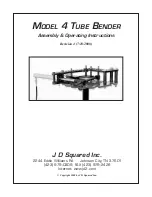
7
GB
This guide must be translated (where applicable) by the dealer in the language of the country where the equipment is used.
For your safety, comply strictly with the instructions for use, verification, maintenance and storage.
KRATOS SAFETY cannot be held liable for any direct or indirect accident occurring following use other than that provided for in these instructions;
do not use this equipment beyond its limits!
INSTRUCTIONS FOR USE AND PRECAUTIONS:
The KRATOS SAFETY temporary retractable wire lifeline is a temporary, easily portable anchorage device compliant with standard EN 795:2012 Type
C, TS 16 415:2013 Type C and with European Directive 89/686 EEC. This lifeline was designed to protect the safety of users anywhere there is a risk
of falls. User safety relies on the effectiveness of the equipment and full understanding of the safety instructions contained in this user guide. It may be
used by 2 persons maximum at the same time.
Only one version exists: FA 60 033 18 - 18 m wire lifeline. It has a tension indicator on the carrying handle (see diagram below). An internal energy
absorption mechanism limits the impact on the anchorage points or the structure to 11 kN, even if 2 people fall at the same time, and even if the fall
happens when the lifeline is completely unwound to 18 m (a wire reserve enables the wire to be unwound as necessary for the absorption generated by a
fall). It must be installed for the period of use then removed from the work site when it is no longer in use. This is made easier as the system is extremely
simple to install and uninstall.
It may be used in an ATEX zone in compliance with the marking that you will find on the Marking page of this leaflet.
Installation
:
Prior to installation, check that the anchorage points on which the lifeline must be installed
are positioned horizontally at a maximum 15° angle to the
horizon line,
that they are compliant with EN 795:2012 standard with a resistance above 22 kN and that they are able to bear the forces transmitted by
the lifeline in all possible fall axes (see figure below):
It is prohibited to use the device with structures with small dimensions and corrosion as this can affect the performance of the device.
Before installation, it is essential to take into consideration the deflection
(
F
) of the lifeline in the event of a fall; the table below is provided as an
example:
When choosing the place of installation, give preference to situations where the lifeline is situated above the shoulders of the users, and make sure the
equipment is not likely to be damaged by sharp edges, rubbing, heat sources, etc.
It is recommended to connect only one lifeline per anchorage point. Never connect the end of the lifeline to itself to form the anchorage.
After having determined where to install the lifeline, proceed as follows: (follow the steps strictly)
Connect the end connector (1a) to an anchorage point (EN795 R> 22kN), check that the tensioner crank handle (4) is in a folded position, hold the push
pin in (3) and unwind the cable to the second anchorage point (EN795 R>22 kN) and release the push pin (see figure 2): the system automatically locks
the unwinding of the wire. If the system does not lock the unwinding of the wire, the lifeline must not be used. Then connect the tension indicator (2)
to the second anchorage point with the connector (1b). Adjust the lifeline’s tension: unfold the tensioner crank handle (4) (see figure 1) and turn the
tensioner crank handle (4) clockwise until the red tension indicator washer (2a) turns freely (stop turning the crank handle as soon as the washer starts to
turn – it is not desirable to place too much tension on the line!), then fold back the tensioner crank handle (4) (see figure 2). The lifeline is ready for use.
Be sure
to account for the clearance needed by the fall arrest
system used,
the useful clearance
will therefore be the sum of
the deflection of the lifeline + the clearance of the fall arrest
system.
Deflection (
F)
Number of users
Length (L)
1
2
5 m
1.3 m
1.3 m
10 m
1.5 m
1.7 m
15 m
1.7 m
2.2 m
18 m
1.9 m
2.4 m
1a & 1b
Connectors (x 2)
2
2a
Tension indicator
Tension indication washer
3
Push pin
4
Tensioner crank handle
5
Rewinding wire wheel
6
Carrying handle
7
Casings








































